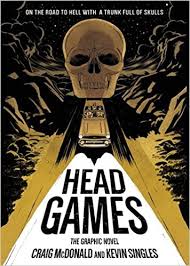 SOUNDTRACK: RHEOSTATICS-Live at Massey Hall (April 29, 2016).
SOUNDTRACK: RHEOSTATICS-Live at Massey Hall (April 29, 2016).
 After their farewell concert at Massey Hall in 2007, who would have guessed that some nine years later they’d be back again.
After their farewell concert at Massey Hall in 2007, who would have guessed that some nine years later they’d be back again.
When I heard this show was announced I immediately bought a ticket, not really thinking about how I would logistically manage such a thing. I was able to get it to a fan who could go, but at least I’ll have my email confirmation:
Live at Massey Hall: Rheostatics
Fri 04/29/2016 8:00 PM
Main Floor Centre Front Seat I-44 $29.50
This time Martin’s voice is working again. But in the intervening years he has had something else go on with him. I don’t know details, but there’s some kind of anxiety present–and it comes out during this show.
Amazingly, for such a big show, there is hardly any evidence of it online. There’s a few fan videos but no full sets available.
The only performance available that I can find is the official release from (the terrific) Live at Massey Hall series. The whole series is wonderful–professionally filmed and beautifully recorded. The only problem is that it’s so short. I don’t know how long the show was, but the video is only 40 minutes.
The video opens with Martin talking about his laryngitis, “laryngitis taught me to enjoy singing in a lower range.” There’s Tim talking about seeing Devo (who were walking on treadmills the whole show) at Massey Hall and overheating from wearing a heavy coat in winter. Dave saw lot so new wave bands who weren’t great live but were great because they were in Massey hall–it’s a forgiving and inspiring place.
Big red letters in the back of the stage spelled out RHEOSTATISC (sic).
The set opens with “King of the Past” Martin plays a lovely solo and gets some applause and the whole thing sounds great.
“Californian Dreamline” opens with some great sound effects from Martin, Hugh Marsh and Kevin Hearn. But after the “sensamilla” bit, Martin freaks out. He steps away from the mic and waves everyone off.
Dave jumps in, “this happened in Montreal once. It’s true. We were opening for Moxy Fruvous, so it’s a kind of curse we’ve got to exorcise.”
The band jams on and them Martin comes back to sing and the crowd gives him a big cheer–there really is no more forgiving crowd than a Rheostatics crowd.
The opening acoustic guitar of “Claire” begins. That’s Tim on acoustic, Dave on bass and Martin on his gorgeous double neck guitar. The letters have been rearranged to say SORTA ITCHES and Martin plays a great solo. Tim sounds perfect, of course.
They start “P.I.N.” Martin sings the first line and then has an issue. He steps away again while the band plays on. He catches himself and returns (again to encouraging applause). Once it gets going it all sounds great.
Dave finally gets a lead vocal song. The letters spell out SHITCOASTER as they play a flawless “Mumbletypeg.”
Then apparently the entire rest of the show happens and we get the night-ending encore–a wild and raucous “Dope Fiends and Boozehounds.” (The letters finally spell RHEOSTATICS). The song gets off to a pretty good start. For the middle, Martin and Hugh face each other (Martin always seems comforted by being with Hugh) and then Don Kerr gets a drum solo (with sound effects from Kevin Hearn).
At the end of the song, for the “moon,” there are howls, probably from Kevin, possibly from the audience. As they slowly fade away, Dave jumps of the drum rise and the end of the song begins. But this is an extended jam ending. Hugh and Kevin make some menacing sounds and then Martin plays a solo with a slide. It’s a weird, very undramatic ending for such a dramatic band.
I have always been sad that I couldn’t go to this show, but it sounds like it would have been a real roller coaster of a night.
Read this review from Radio Free Canuckistan for the perspective of someone who was there.
Over the closing credits, Kevin Hearn’s father read “The Laughing Heart” by Charles Bukowski. I assume he read that before the band came out (accompanied by Hugh Marsh).
I don’t know much by Bukowski, but this is great for its simple profundity.
The Laughing Heart
your life is your life
don’t let it be clubbed into dank submission.
be on the watch.
there are ways out.
there is light somewhere.
it may not be much light but
it beats the darkness.
be on the watch.
the gods will offer you chances.
know them.
take them.
you can’t beat death but
you can beat death in life, sometimes.
and the more often you learn to do it,
the more light there will be.
your life is your life.
know it while you have it.
you are marvelous
the gods wait to delight
in you.
[READ: March 5, 2018] Head Games
As with some of my favorite books, the story behind the creation is almost as interesting as the book itself.
Craig McDonald is a journalist and he says that he is often frustrated by trying to write the truth: “read five biographies about the same person and you’ll feel like you’ve read about five different people.” With fiction maybe you can find something bordering truth.
The introduction by McDonald tells us that we will be riding with pulp novelist Hector Lassiter. Lassiter is the protagonist of a finite arc of ten novels. The last one, Three Chords & The Truth is a sequel to Head Games and appeared in 2016. Lassiter is a charmer, a rogue, a rake and a crime novelist who lives what he writes and writes what he lives. Hector was born in Texas in 1/1/1900 and the arc of the novels spans the 20th century.
McDonald says the publishing history of the books is not chronological. Head Games was the first novel published. The second was set in 1935 and features Hemingway prominently. Other books hopscotched through the decade. They have recently been reissued and presented in roughly chronological order.
The novels “follow secret histories and underexplored aspects of real events.” They’re set in real places and use history and real people to drive the plots. (more…)



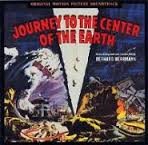
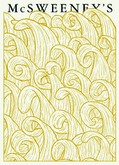 SOUNDTRACK: THE REPLACEMENTS-Hootenanny (1983).
SOUNDTRACK: THE REPLACEMENTS-Hootenanny (1983).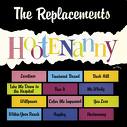 This is the second full length from The Replacements. For a band that just released two punk albums (one’s an EP), naming your new one Hootenanny is pretty ballsy. As is the fact that the first track sounds like, well, a hootenanny (even if it is making fun of hootenannies.)
This is the second full length from The Replacements. For a band that just released two punk albums (one’s an EP), naming your new one Hootenanny is pretty ballsy. As is the fact that the first track sounds like, well, a hootenanny (even if it is making fun of hootenannies.)
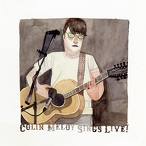 Colin Meloy is the lead singer and songwriter for the Decemberists. This is a recording of Meloy’s solo acoustic tour from 2006. The recording is from several venues on the tour, although it is mixed as if it were one concert.
Colin Meloy is the lead singer and songwriter for the Decemberists. This is a recording of Meloy’s solo acoustic tour from 2006. The recording is from several venues on the tour, although it is mixed as if it were one concert.